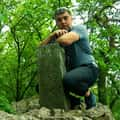Czech Republic Bull rock cave
Bull rock cave is a cave located in the central part of the Moravian Karst Protected Landscape Area, north of the city of Brno, in the Křtiny Valley between the town of Adamov and the village of Křtiny. Together with Barová (Sobolová) Cave and "Rudické propadání" (karst sinkhole), it forms the second longest cave system in the Czech Republic after Amatérská Cave, with a total length exceeding 18 kilometers.
From 1867, Jindřich Wankel conducted excavations in the cave, where he discovered a Paleolithic settlement. Among the most significant discoveries is a bronze bull statue, which gave the cave its name. In the following years, Dr. Wankel made the discovery of the Hallstatt burial site. In 1872, more than 40 skeletons and a number of objects from the early Iron Age (Hallstatt period) were found at the bottom of the vestibule. The cave space was probably used as a cave sanctuary.
Towards the end of World War II, the Nazis began building an underground factory in the entrance area of the cave. Although they did not manage to complete it, the construction work caused irreparable damage to.
The underground river is connected to the sinkhole in Rudice, and the entire underground system can be traversed, but it is very challenging.
From 1867, Jindřich Wankel conducted excavations in the cave, where he discovered a Paleolithic settlement. Among the most significant discoveries is a bronze bull statue, which gave the cave its name. In the following years, Dr. Wankel made the discovery of the Hallstatt burial site. In 1872, more than 40 skeletons and a number of objects from the early Iron Age (Hallstatt period) were found at the bottom of the vestibule. The cave space was probably used as a cave sanctuary.
Towards the end of World War II, the Nazis began building an underground factory in the entrance area of the cave. Although they did not manage to complete it, the construction work caused irreparable damage to.
The underground river is connected to the sinkhole in Rudice, and the entire underground system can be traversed, but it is very challenging.
Photography Tips
A tripod is definitely useful inside. The outdoor scenery of the entrance is beautiful and a wide-angle lens is suitable.
Travel Information
The cave is normally closed and locked. However, every spring there are three weekends when it is possible to go inside, and it is really worth it. I recommend a guided tour with commentary on the history.
Spot Type
Outdoor
Crowd Factor
Nearly no other people
Best Timing
Spring
Sunrise & Sunset
04:44 - 21:02
| current local time: 19:59
Photo Themes
Ancient places
Cave
Nature
underground
Locations
Southern Moravia
moravian karst










Spot Comments (0)